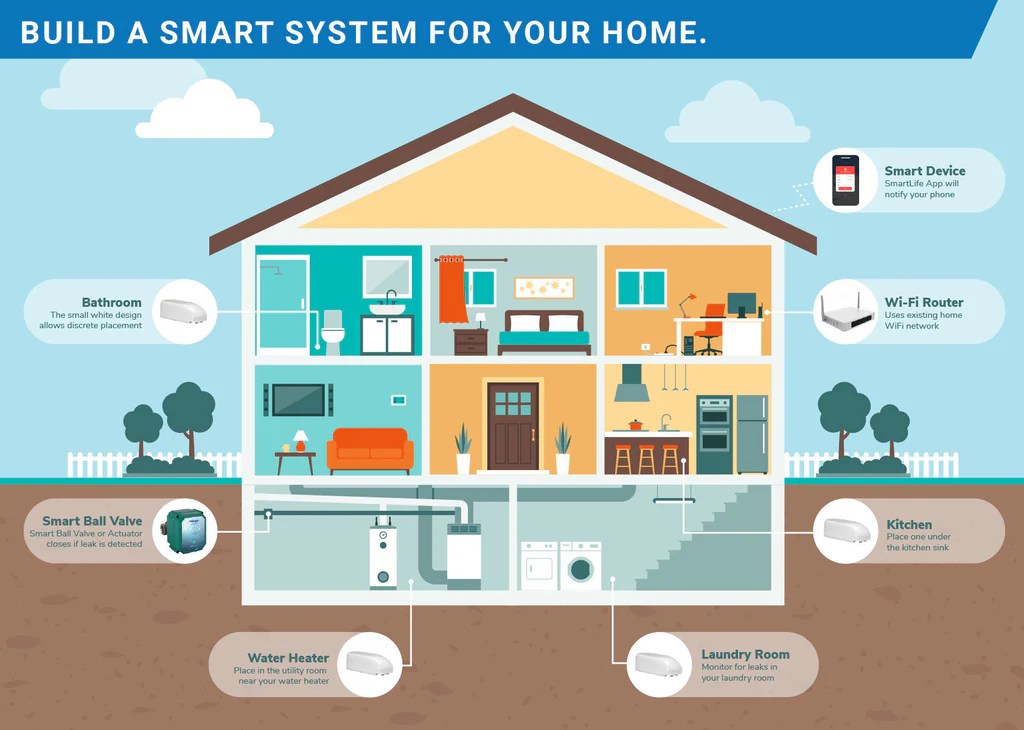How to Use Smart Sensors for Energy Leak Detection is a vital subject in today’s world, where energy conservation is paramount. This exploration delves into the innovative use of smart sensors to identify and mitigate energy waste. From detecting subtle heat leaks in buildings to pinpointing inefficiencies in industrial processes, these advanced technologies offer a proactive approach to energy management. We’ll uncover the various sensor types, their applications, and the significant benefits they bring to both residential and industrial settings, providing a clear path towards sustainability.
This guide covers a wide range of topics, including the types of sensors used (infrared, ultrasonic, pressure, and vibration), the methods for identifying energy leaks in buildings and industrial settings, and the practical aspects of sensor installation, calibration, and data analysis. We will examine real-world case studies and explore the future trends shaping this field, including the integration of artificial intelligence and machine learning to optimize energy efficiency. By the end of this discussion, you’ll gain a thorough understanding of how to leverage smart sensors for effective energy leak detection.
Utilizing smart sensors to pinpoint energy leaks is a proactive approach to conservation. These sensors, when paired with systems such as Smart Home Devices for Real-Time Monitoring , provide immediate insights into energy consumption patterns. By identifying anomalies, you can address issues promptly, ultimately optimizing your energy usage and reducing associated costs, making smart sensors a crucial component of any energy-efficient strategy.
Introduction to Smart Sensors for Energy Leak Detection: How To Use Smart Sensors For Energy Leak Detection
Smart sensors are revolutionizing energy management by providing real-time data and insights into energy consumption patterns. These sensors enable proactive detection and mitigation of energy leaks, leading to significant cost savings and reduced environmental impact. This article explores the application of smart sensors in energy leak detection, highlighting their various types, functionalities, and benefits.
Explain the concept of smart sensors and their role in energy conservation., How to Use Smart Sensors for Energy Leak Detection

Source: shopify.com
Employing smart sensors is a proactive approach to identify energy leaks, providing real-time data on consumption patterns. This allows for swift intervention and cost savings. In the realm of home automation, these sensors align seamlessly with other technologies. Exploring the options, you might also consider integrating them with the “Top Smart Home Gadgets for Remote Monitoring” Top Smart Home Gadgets for Remote Monitoring , for enhanced monitoring capabilities, ultimately improving the efficiency of your energy leak detection system.
Smart sensors are advanced devices that collect and transmit data about their environment. They differ from traditional sensors by their ability to process information, communicate wirelessly, and integrate with data analysis platforms. In energy conservation, smart sensors play a crucial role by:
- Monitoring energy usage in real-time.
- Identifying inefficiencies and energy leaks.
- Enabling automated control and optimization of energy systems.
- Providing data for predictive maintenance and energy forecasting.
Provide examples of different types of smart sensors used for energy leak detection, including their functionalities.
Various types of smart sensors are employed to detect energy leaks, each designed for specific applications. Here are some examples:
- Infrared (IR) Sensors: Detect heat loss through building envelopes and HVAC systems.
- Ultrasonic Sensors: Identify air leaks in compressed air systems.
- Pressure Sensors: Monitor for leaks in pipelines and fluid systems.
- Vibration Sensors: Detect mechanical equipment failures that lead to energy waste.
Share the benefits of using smart sensors to detect and mitigate energy leaks.
The adoption of smart sensors offers several advantages in energy leak detection and mitigation:
- Cost Savings: Reduced energy consumption leads to lower utility bills.
- Improved Efficiency: Optimized energy usage and reduced waste.
- Enhanced Sustainability: Lower carbon footprint and environmental impact.
- Proactive Maintenance: Early detection of equipment failures prevents downtime.
- Data-Driven Decision Making: Provides valuable insights for informed energy management strategies.